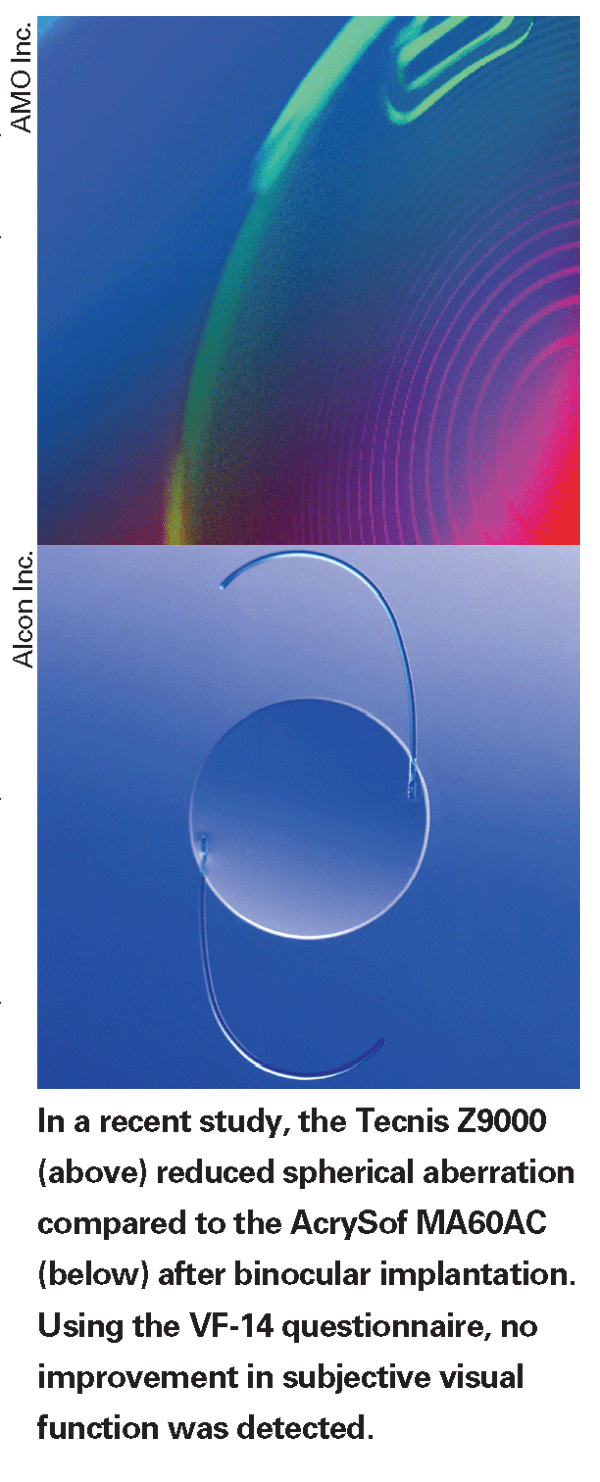According to the U.K.-based Moorfields IOL Study Group, the Tecnis Z9000 intraocular lens reduced spherical aberration compared with the AcrySof MA60AC after binocular implantation.
In the double-masked, prospective, randomized trial, the main outcome measure was the percentage of patients achieving a Visual Function-14 (VF-14) score of 90 or higher. Additional outcome measures were dysphotopsia symptom scores, a five-point subjective grading of overall satisfaction, refraction, photopic and mesopic best-corrected visual acuities, uncorrected visual acuity, Pelli-Robson sensitivity, aberrometry, infrared pupillometry and evaluation of posterior capsule opacification scores.
Seventy-nine patients who had bilateral implantation of the Z9000 IOL and 100 who had the MA60AC were assessed a mean of 7.9 ±2.9 months (range: four to 16 months) after second-eye surgery. Spherical aberration (mean: Z9000, 0.00 ±0.06 µm; MA60AC, 0.14 ±0.09 µm) and root mean square scores for higher-order aberrations combined (mean: Z9000, 0.26 ±0.11 µm; MA60AC, 0.32 ±0.14 µm) were significantly lower in patients with the Z9000 (p<0.001) than the MA60AC (p=0.007). The VF-14 scores were 90 or higher in 96.2 percent of Z9000 patients and 90 percent of MA60AC patients (p=0.15). The researchers state that it is unlikely that this weak trend in favor of the Z9000 was clinically significant. The VF-14 scores were heavily skewed toward a perfect outcome and similarly distributed in both groups (median 100; interquartile range 98 to 100). Results for all other outcomes, including measures of acuity, were similarly distributed in Z9000 and MA60AC patients.
The study's assessment of IOL centration was limited to clinical grading. Decentration by as little as 0.3 mm may be sufficient to negate the theoretical optical advantages of the Z9000 in the range of pupil sizes observed; the researchers would not have been able to detect subtle decentration and had no measure of tilt. Despite a 40-percent dropout rate, the numbers recruited in each arm were significantly higher than in any previous comparison of the Z9000 IOL and a conventional spherical IOL. The heavy skew toward a perfect outcome suggests the VF-14 may have outlived its use as an instrument for measuring vision-related quality of life after modern small-incision cataract surgery.
(J Cataract Refract Surg 2007;33:1559-1564)
Moorfields IOL Study Group




